
We recently went through a cold, robust winter season, with several snow fall occurrences, below normal temperatures, and even some freezing rain. While spring is almost on the horizon, the impacts from these weather events are sure to affect our road conditions.
In a recent poll, it was found that Washington has the 11th roughest roads in the country; and as avid Subaru drivers, I am sure we will both see and feel these effects. These road hazards really can affect and increase the wear of your Subaru’s suspension system.
When you look up the definition of Suspension, it states that it is “ a system of tires, tire air, springs, shock absorbers, linkages and bushings that connects a vehicle to its wheels and allows relative motion between the two, and usually requires the items to be in alignment.” We should always to think of our vehicle’s suspension components as a set of things that are working together, not just individual components. Below are some examples of suspension components, and what their functions are, how we monitor their condition, and when it may be time to replace them.
Struts
Typically, struts are constructed of a housing to provide structural support for the overall assembly and dampening unit (usually hydraulic). On most struts the bottom of the body attaches to the steering knuckle, which turns to a lower control arm through a lower ball joint. This integral component can affect handling, cornering, acceleration and yes even stopping distance.
Anytime there are signs of fluid leaking from the Struts they really should be replaced, and other than a break or bend in the strut due to some sort of an accident, Fluid leaks are really the only visual sign indicating a strut replacement is warranted there is.
From there it’s knowing how the car should perform Vs what it is doing now. These are some but not all of the indications that perhaps your Struts have become weak.
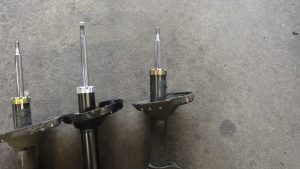
Worn Subaru Strut Compared To New One

Leaking Subaru Strut
Bushings
These are usually round “cushions” made of several types of materials, with most common being rubber and polyurethane. They are mounted on vehicle suspension arms/linkages, that help control movement in the joints, absorb road bumps and reduce vibrations and noise. These items are usually installed in metal suspension arms called Front Lower Control Arms, Trailing Arms, Lateral Links, and Upper Control Arms to name a few.
Besides visually monitoring the health of these items, when these items start to fail, you can usually hear or feel it. Some of things you can experience are the following:
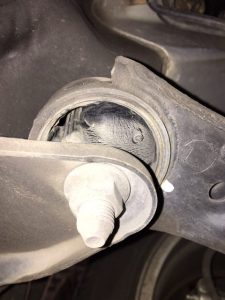
Torn Front Lower Control Arm Bushing
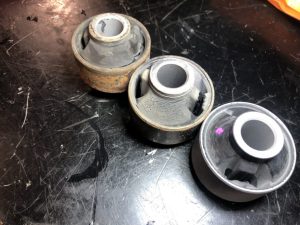
New Vs Old Subaru Suspension Front Lower Control Arm Bushing
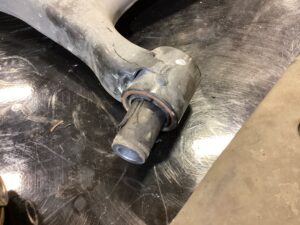
Completely failed control arm bushing
Sway Bar & End Links
Also known as a stabilizer or anti-roll bar, is usually mounted to the lower subframes with rubber bushings, and connects the suspension components on either side of the vehicle through small dog bone shaped items called End Links. These items help minimize body roll, and can make the steering feel “tight”. When failed, you can experience some of the following:
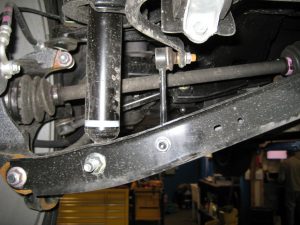
Sway Bar End Link Attached To Rear Lower Control Arm

Front & Rear Sway Bar Removed From Vehicle
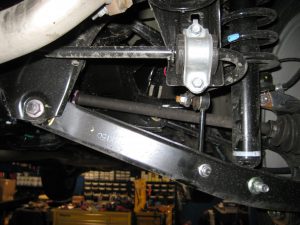
Sway Bar Attached To Rear Frame
Tires
Tires and the amount of air in the tires are fundamental parts of the suspension system. Tires are the only part of the vehicle that are supposed to come in contact with the road, as well as being responsible for putting power to the ground, and help be responsible for stopping the vehicle. The easiest way to tell if a tire is bad is to visually inspect it, but can also include experiencing a low to moderate constant vibration, especially at higher speeds.
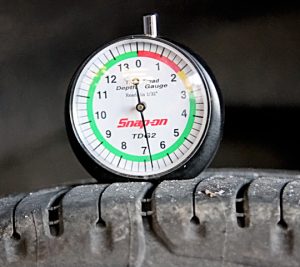
Tire Gauge Showing Healthy Tire Tread
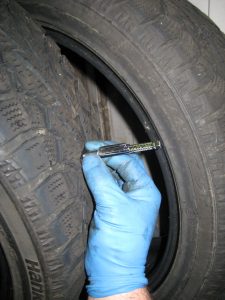
Measuring Tread Depth On Worn Tire
As always, any replacement of suspension components should start out with an inspection of the suspension system to make sure it is sound. It is possible that one of the suspension components has suffered as a result, and may have caused another item to become weak. This will ensure your satisfaction with the money spent on enhancing the Subaru’s performance on the road.
Hope this gives you a little more insight into vehicle suspension on your Subaru.
Whether you need to have your Subaru suspension repaired or inspected, you can do so at either of our locations; Kirkland and Bothell! You can choose which location in the drop down below.
Thanks for reading.
– Joe Malinosky
Jose Damian Gonzalez Garrido says:
Hi. I want to replace the bushings on the rear suspension, but it seems like I can only buy a full frame. I only need the bushings. It’s a 2009 forester. Any advice?